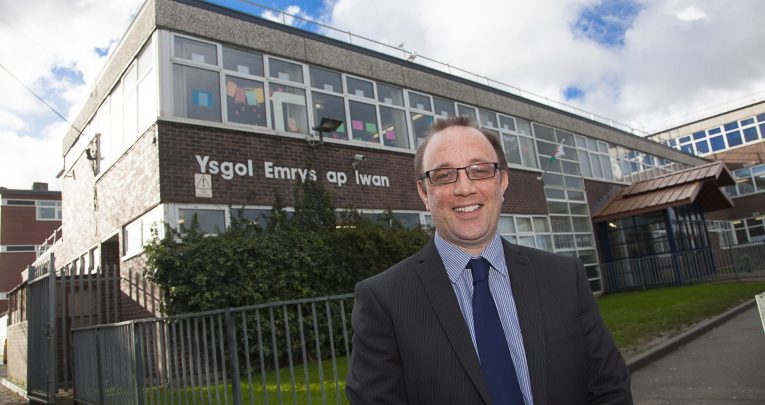Case Study: The Teacher Effectiveness Enhancement Programme

Lee Cummins, headteacher of Ysgol Emrys ap Iwan in Conwy, Wales, recalls the positive changes that followed the school’s adoption of the TEEP programme… Here at Ysgol Emrys ap Iwan in Abergele, North Wales, we have seen a significant change since we began using the Teacher Effectiveness Enhancement Programme (TEEP). We are the first in […]

- by Lee Cummins

Lee Cummins, headteacher of Ysgol Emrys ap Iwan in Conwy, Wales, recalls the positive changes that followed the school’s adoption of the TEEP programme…
Here at Ysgol Emrys ap Iwan in Abergele, North Wales, we have seen a significant change since we began using the Teacher Effectiveness Enhancement Programme (TEEP).
We are the first in Wales to adopt the system, though it is widely used in schools in England. We’ve now become an ambassador school for TEEP in Wales, which means teachers and others involved with secondary education will be invited to come and see it in action.
Driving up standards
TEEP aims to drive up professional standards by improving the performance of teachers in the classroom, and ensure all learners achieve the best they can, right from the start of every lesson. The impact it has had right across the school for our 1250 learners is the prime reason why I’ve become an advocate for TEEP. Essentially, they are prepared for their learning early in lessons, and throughout the session. They are encouraged to carefully consider new information and then apply their knowledge to demonstrate secure understanding.
They are engaging more than ever, and we are seeing the vast majority of them showing lots more enjoyment and enthusiasm – inside the classroom and outside – for their learning. Of course, the biggest impact we want to see in school is an improvement in standards when they leave us – and we are optimistic that this will be the case.
Another sign of success we are seeing is that there are now more creative learning opportunities being taken by staff outside the classroom, with more use being made of interactive resources and modern technology.
Collaborative learning
The programme places lots of emphasis on the effective use of ICT to reflect real world examples, which in turn enhance learning. The use of a range of technologies, including cameras, game consoles, MP3 players, mobile phones, computers and electric white boards is broadly encouraged.
In addition, more use is being made of collaborative learning. This has meant groups of learners working and learning together to complete a task, solve a problem or create a product. Another benefit of TEEP has come in terms of what the programme calls ‘Prepare for Learning’, which involves teachers working strategically with their learners to develop a climate conducive to learning.
One area TEEP encourages you to consider in this context is the physical learning environment. Our school had always taken the traditional approach of arranging desks in rows within a classroom, but since the implementation of the programme, the desks are now arranged in groups, which appears to work much better.
Trialling the methodology
Lots of schools that have adopted TEEP so far have applied it only in their KS3 and KS4 groups. However, we are using it right across the school, including our sixth form.
I first became aware of and interested in TEEP in my previous post as a deputy head of Connah’s Quay High School in Flintshire, North Wales. We had done quite a lot of work with iNet Wales – the Welsh arm of the Specialist Schools and Academies Trust – and TEEP was one of the programmes they talked about being used by a number of schools in England, although no-one in Wales was using it at the time.
When I was thinking about what I could bring to my new job as head teacher at Ysgol Emrys ap Iwan, TEEP sounded like something worth trying, which could be useful in terms of improving the quality of our learning and teaching.
Once I started at Ysgol Emrys ap Iwan, I arranged for one of the assistant heads to go and visit a school in England that was already using TEEP, and he came back full of enthusiasm for it. After the decision was taken to implement the programme, our staff were initially trained by staff from another school already using TEEP. Once there was a good understanding of it, we then tried out its methodologies across a half-term.
There was an additional full day’s training for the staff once people had consolidated their ideas, and we spent a third day rehearsing and practising those ideas. Every member of staff then chose one class in which to trial the TEEP methodology.
Positive effects
We also ran sessions for parents to explain what TEEP was all about, and did similar work with our learners in school to ensure that everyone understood what was going to happen.
I am delighted to say that we are now seeing the positive effects that TEEP has had at the school’s teacher practice and learning outcomes. Based on the observations of myself and our other senior leaders, the number of lessons we grade as good or better than previously has increased significantly. Our teachers are also using refined assessment techniques to measure overall progress of learners, and we have seen an improvement in standards at KS3, KS4 and KS5.
I believe that TEEP will have a lasting benefit for our learners once they leave us for further or higher education or the workplace, and that they will continue to apply the methods for themselves. I would welcome a visit from any Teach Secondary or Teachwire reader, in England or Wales who would like to discuss TEEP or see it in practice in the classroom. Ysgol Emrys ap Iwan is an English language medium school, but TEEP will work just as successfully in schools where Welsh is the main language.
For further information about Ysgol Emrys ap Iwan, visit www.emrysapiwan.conwy.sch.uk or follow @emrysapiwansch










